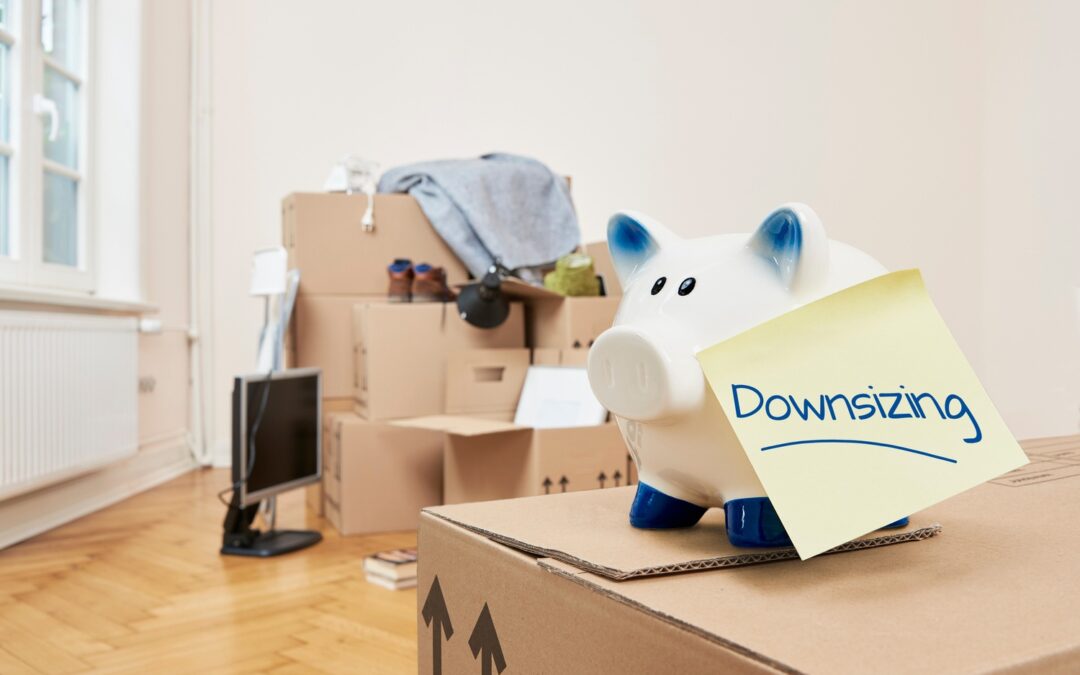Moving to a smaller space can feel overwhelming, but it’s also an opportunity to simplify your life and focus on what matters most. Downsizing can help you reduce clutter, save money, and free up time for experiences rather than maintenance. If you’re planning this transition, use these practical tips to make the process smoother and less stressful.
1. Start Decluttering Early
Give yourself plenty of time to go through your belongings. Downsizing requires tough decisions about what to keep, donate, sell, or discard. Start this process at least a few months before your move date. Begin with less sentimental areas like the kitchen or garage. A good rule of thumb: if you haven’t used an item in the past year, it’s probably time to let it go.
Consider using a mobile storage company to help you sort things out during this phase. A mobile storage unit can give you extra space temporarily while you sort through your belongings, letting you keep items safe while deciding what stays and what goes. It’s especially helpful if you’re downsizing gradually or need more time to evaluate certain possessions.
2. Measure Your New Space
Before deciding what furniture and large items to bring, measure your new home’s rooms, doorways, and storage areas. This will help you determine what can fit and what you might need to leave behind. Take note of your new closet space, cabinet sizes, and the dimensions of your living areas. This step will save you from transporting items that won’t work in your new home, reducing moving costs and hassle.
Visualize how your existing furniture might fit. Use online room-planning tools or simply sketch a layout to get a sense of what pieces will work best. This can prevent disappointment on moving day when your oversized sofa won’t fit through the door.
3. Prioritize Multifunctional Items
When space is limited, items that serve multiple purposes are invaluable. Consider furniture like a sofa bed, a coffee table with storage, or a fold-out desk. These multifunctional pieces can help maximize your square footage and keep your new home clutter-free.
In the kitchen, look for appliances that offer versatility, like a toaster oven that doubles as an air fryer. This way, you save space without sacrificing functionality. The goal is to streamline without losing comfort, so pick practical items that fit your lifestyle.

4. Adopt a Minimalist Mindset
Downsizing is an opportunity to simplify your lifestyle. Adopting a minimalist approach helps you focus on what you truly need and value. Start by separating your belongings into three categories: essentials, nice-to-haves, and items that don’t serve a clear purpose.
Ask yourself why you’re holding on to certain things. Is it sentimentality, or do you genuinely use the item often? Being honest with yourself can help you let go of unnecessary belongings and create a more comfortable living space.
5. Digitize Paperwork and Media
Paperwork, books, DVDs, and photo albums can take up a surprising amount of space. In a smaller home, every square foot counts, so digitizing these items can be a huge help. Scan important documents and store them on a secure cloud service or an external hard drive. This reduces the need for bulky filing cabinets.
For media, consider digital subscriptions or streaming services instead of physical DVDs or CDs. With photos, digitize old albums and create a digital photo book if you still want a tangible keepsake. This approach not only saves space but also helps you organize and access your content more easily.
6. Sell or Donate Items You Don’t Need
Once you’ve decided what to keep, look at ways to sell or donate your unneeded items. Furniture, appliances, and electronics can be sold online through selling platforms. This not only clears space but also helps recoup some of your moving costs.
Donations are a great option for items that are still in good condition. Check with local charities, shelters, or thrift stores that accept household goods. Donating is a faster way to clear things out and benefits those in need. It’s also less stressful than organizing a yard sale, especially if you’re short on time.
7. Stay Organized Throughout the Move
Downsizing often requires more planning than a typical move. Create an inventory list and label your boxes clearly with their contents and the room in which they belong. This helps you avoid confusion and makes unpacking much easier.
Keep important items like paperwork, medications, and basic toiletries in a separate, easily accessible box. That way, you won’t be rummaging through boxes on your first night in your new home. Taking a little extra time to stay organized will make the transition much less chaotic.
Final Thoughts
Downsizing can be a significant change, but it doesn’t have to be stressful. With careful planning and a practical approach, you can make your new, smaller home feel just as comfortable and welcoming as your old one. Focus on what you value most and look forward to a simpler, more efficient lifestyle.

Recent Comments